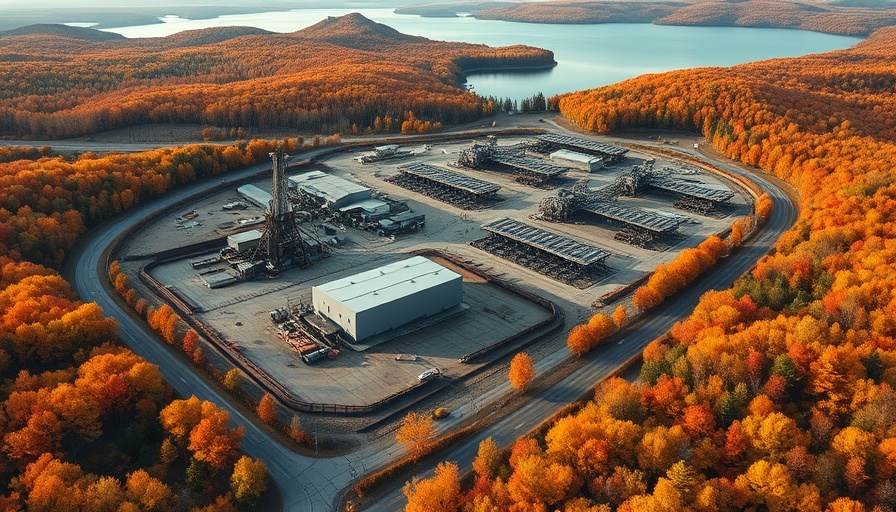
Alamos Gold's Ambitious Plan for the Island Gold District
Alamos Gold is making significant strides in the mining industry with its bold plans for the Island Gold District, located just outside Dubreuilville. With its recent announcement of a comprehensive life-of-mine plan projected to span over two decades, the Toronto-based gold company is aiming for substantial increases in production and efficiency.
Setting Gold Production Goals
The company’s blueprint indicates a remarkable 43% increase in annual gold production, targeting 411,000 ounces per year beginning in 2026. This sets an ambitious path for growth, especially when considering an average output leveling off to approximately 306,000 ounces annually over the next 20 years. This anticipated surge in production is primarily attributed to the robust potential of Alamos’s expansive 60,000-hectare land package.
Significant Reserves and New Developments
The region boasts a 48% rise in gold reserves, now clocking in at an impressive 6.3 million ounces with a notable grade of 2.23 grams per tonne. Particularly impressive is the Island Gold Mine, where reserves increased by 80% to 4.1 million ounces at a stellar 10.85 grams per tonne. Such increases affirm the project's economic viability, emphasizing the transformation of resources into gold that can be efficiently mined.
Transformative Infrastructure Investments
To facilitate this growth, Alamos Gold is implementing new infrastructure projects, including a new shaft that is slated for completion by 2026. This essential upgrade allows for more efficient movement of ore and waste, significantly elevating the operations' effectiveness. With this project alone, the underground mining rates are expected to double, allowing for the extraction of 2,400 tonnes of ore per day.
Financial Viability in a Booming Market
Looking ahead, Alamos plans to invest $453 million into the Island Gold District. Most of these funds will go towards completing the new shaft and upgrading milling capacity to 12,400 tonnes per day. Given the soaring gold prices, Alamos has expressed a strong belief that these investments can be self-financed, generating substantial cash flow to support ongoing and future expansions.
The Exploration Horizon: What Lies Beneath?
In addition to broader operational upgrades, Alamos is keeping its eyes on exploration. The Michipicoten Greenstone belt, where the mines are situated, continues to demonstrate significant geological potential for gold discovery. The prospect of exploring deeper veins and unearthing even more vast mineral reserves has the company optimistic about the future growth of the Island Gold District.
A Look Ahead: The Future of Alamos Gold
Alamos Gold has promised to release an in-depth expansion study later this fall that could reveal further potential and highlight a larger mineral reserve at the Island Gold District. This study is anticipated to present options for an additional expansion capacity of up to 20,000 tonnes per day, enhancing the overall profitability and value of the operation.
Conclusion: What This Means for the Community and Investors
As Alamos Gold continues to push forward with its plans for the Island Gold District, the implications extend beyond the company itself. Increased mining operations can lead to job creation in the region, providing opportunities for local workers in a sector that has historically offered economic stability. Investors can look forward to the company’s potential growth in a lucrative market, backed by a robust operation poised for profitability.
In recognition of the ongoing developments, it’s essential for stakeholders, including community members, investors, and local officials, to stay informed about Alamos Gold's progress in Dubreuilville. Engaging with the advancements and challenges in the mining sector can uniquely position stakeholders for future opportunities.
 Add Row
Add Row  Add
Add 




Write A Comment